
This variation on classic buttermilk pie might be one of the most Southern dessert pairings ever.
Photo: Hélene Dujardin

This version of the nostalgic spread is a balanced blend of house-smoked city ham, with local country ham, and a full spectrum of pork-friendly flavors: mustard, scallions, parsley, sorghum syrup, and more.
Photo: Brennan Wesley
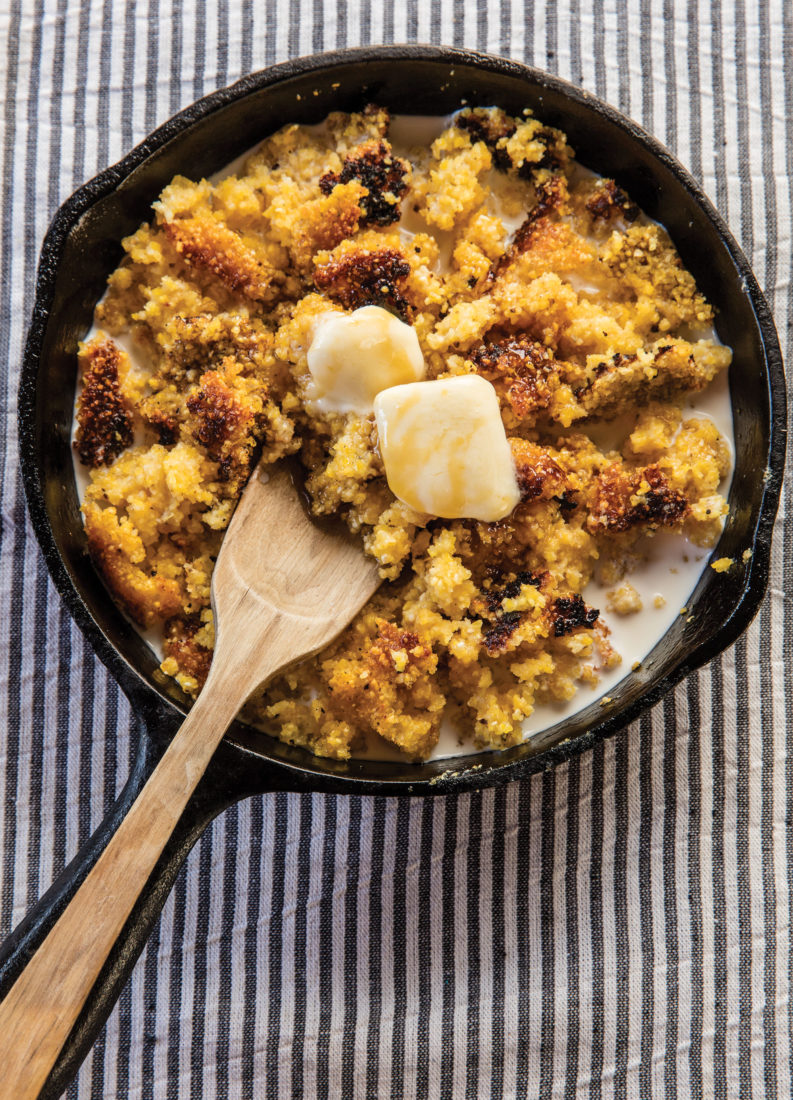
This cornmeal cousin to grits, made savory with bacon grease and sweet with cane syrup, came to Texas when oil rig jobs in the 1900s drew Louisiana families to the southeastern corner of the state known as the “Golden Triangle.”
Photo: Sandy Wilson

Chef Alex Harrell learned this dessert from his grandmother, “Ma Ma.” Today, it’s on the menu at his New Orleans restaurant, Angeline.
Photo: Margaret Houston

Two farmers’ market standouts come together in this savory summer favorite.

Chicken bog is named for its soupy, porridge-like quality in which chunks of tender, pulled chicken are “bogged down” in rich broth. It’s like the love child of chicken-rice soup and Italian risotto, with the addition of the signature smoky flavor good-quality sausage delivers.
Photo: Jacqueline Stofsick, Food Styling: Phillip Rhodes
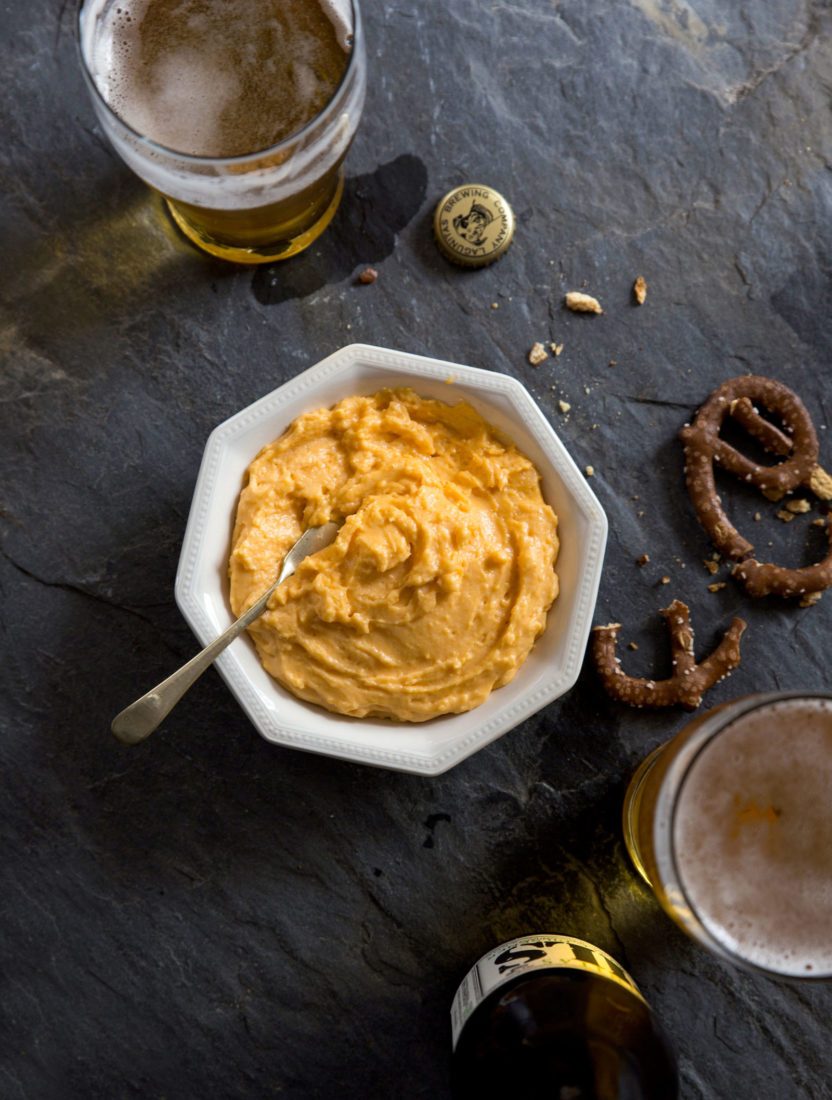
Kentuckians debate beer cheese’s origins—most agree it was likely first served in the 1940s at Johnny Allman’s restaurant in Clark County—as well as the best cheese to use. This version uses sharp cheddar for its bite, spiced with garlic, cayenne pepper, and smoky paprika, and mixed with a local pilsner.
Photo: MARGARET HOUSTON

Ever drop a handful of roasted peanuts into an ice-cold Coca-Cola? The sweet and salty pairing, rare above the Mason-Dixon line and vanishing below, conjures vivid memories from many Southerners. Revamp the childhood treat for the cocktail crowd with the Tallulah, a drink made with Coca-Cola, peanut syrup, and a healthy pour of Jack Daniel’s.
Photo: Peter Frank Edwards

“Tastes Like Apple” Zucchini Pie
During World War II, apples got expensive. Transporting fruit from one area of the country to another wasn’t easy to do when rail transportation and gasoline were saved for the troops. Zucchini were easy to grow in victory gardens, and they came into season long before apples were on the trees. But even when apples are easy to find, this delicious dessert is worth a try.
Photo: Phillip Rhodes

Although gumbo’s Lowcountry cousin is rarely referenced in the city’s fanciest restaurants, it’s still served in homes and affordable luncheonettes. Chef B.J. Dennis’s version of the traditional soup is made with shrimp, rather than beef, which usually governs the tomato broth.
Photo: Wade Spees

“Strawberry pretzel pie is a good old-fashioned grandmas-at-a-church dish,” says Justin Burke-Samson, the pastry chef at North Carolina restaurants Kindred and Hello, Sailor. This recipe is his take on the sweet-and-salty original.
Photo: JUSTIN BURKE-SAMSON

Peanut Butter and Mayonnaise Sandwich
Through the hardships of the Great Depression and the lean years that followed, peanut butter and mayonnaise kept many struggling households afloat—and earned plenty of fans along the way.

“Dirty rice is as common at the Cajun table as mashed potatoes and gravy is elsewhere,” says chef Isaac Toups. Taste his version and see why.

These aren’t your mom’s soup beans, but this soul-satisfying Southern favorite will still hit the spot.
Photo: Phillip Rhodes

The author and chef Joyce Goldstein first served pickled peaches with fried chicken for a Fourth of July celebration. “Now, my family insists that we have these peaches in the pantry, because we eat fried chicken more than once a year,”
Photo: Ed Anderson

The secret ingredient to this version of the potluck staple? Durkee sauce, a tangy sandwich spread. “You’ll never open my refrigerator without finding a jar of it,” says Augusta, Georgia, caterer Vera Stewart.

While Owen Brennan, the founder of Brennan’s restaurant in New Orleans, is credited with inventing the Bloody Bull—essentially, a more savory Bloody Mary made with beef bouillon—this G&G writer’s grandparents fell in love with it just down the street, at the storied Carousel Bar at Hotel Monteleone
Photo: Jacqueline Stofsick

A refreshing, herby vinaigrette livens up lady peas for this bright—and decidedly Southern—side dish.
Photo: Amber Wilson

Honeysuckle’s floral perfume is the scent of summer in the South. For fans of Chapel Hill mainstay Crooks Corner, it’s the taste of the season, too.
Photo: Margaret Houston

After a night of dancing into the wee hours during the Roaring Twenties, revelers in Louisville would stop by the Brown Hotel’s restaurant, where Chef Fred Schmidt concocted an open-faced turkey sandwich smothered in classic Mornay sauce. Our recipe makes only one alteration to the basic formula: thick Texas toast provides a more solid foundation for the gravy-topped goodness.
Photo: Margaret Houston
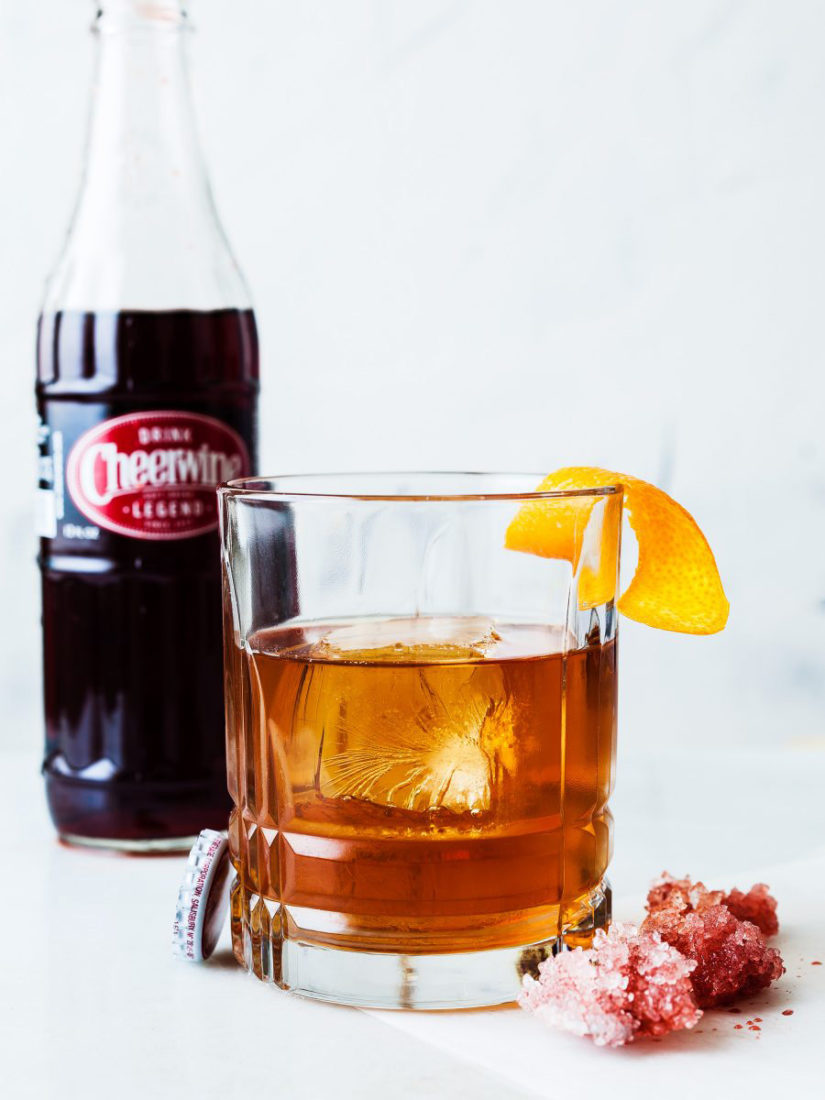
This old-school cocktail infuses rye whiskey with rock candy and fragrant herbs and spices.
Photo: Johnny Autry

Transform a basic cracker into a holiday treat with this twist on the old-school classic, courtesy of Virginia Willis.
Photo: Hélène Dujardin

Spicy-sweet and a little bit tart, Jezebel sauce—done right—is a cook’s best friend. This version from chef Tandy Wilson of City House in Nashville elevates the classic relish to new heights.
Photo: JOHNNY AUTRY

Never heard of cracker salad? You’re probably not from southeast Georgia. Some cooks use Ritz and others Saltines, but the concept is the same either way: Crumbled crackers, chopped tomatoes, salt, pepper, and sometimes other seasonings and vegetables, all folded into a mayonnaise base.
Photo: Margaret Houston

“The power of salt to season is nowhere clearer than when it graces hot, crisped potatoes,” says author Ronni Lundi. This recipe is her Southern mountain take on a Swiss classic—complete with quickly browned crust and tender potato insides.
Photo: Johnny Autry

Plenty of Southern mid-century cooks garnished run-of-the-mill canned pears with mayonnaise and mild cheddar for an easy, delicious side dish. Asheville chef Justin Burdett riffs on the original with this champagne-soaked version.
Photo: Johnny Autry

Cooked down, this trio of summertime ingredients—butter, white bread and tomatoes—is an acidic, slightly sweet complement to grilled meats and fried chicken.
Photo: Peter Frank Edwards

The manna sandwich is a hot, sloppy hoagie stuffed with seasoned ground beef, melted cheese, and a creamy sauce made with ketchup, mayonnaise, mustard, and salad dressing—and it’s a local favorite in small-town Georgia.
Photo: Margaret Houston

The beaten biscuit doesn’t disintegrate into buttery crumbs. It lacks the tang of buttermilk and the lightness of baking powder. It can require more than an hour of hard work. Even so, devotees like chef Karl Worley of Biscuit Love in Nashville believe it’s worth the trouble.
Photo: Margaret Houston

Many family stories suggest that this humble sweet, made from just four ingredients, is a Depression-era creation born of frugal ingenuity. But it’s more likely that potato candy made its way to the South with Irish settlers as a confection reserved for special occasions like Thanksgiving or Christmas.
Photo: Peter Frank Edwards

Meringue clouds studded with hunks of pecan, these delicious treats are bound to trigger a few sweet memories, especially among Southerners of a certain age.

Communal cooking at its finest, each layer of apple jack stack cake was originally baked at home by individual cooks, likely in cast-iron skillets, then brought together and assembled for church suppers and gatherings. Instead of the spongy cakes we’re used to today, these layers are more like cookies—firmer, so they slowly soften beneath liberal applications of apple butter and cooked apples.
Photo: Peter Frank Edwards

Given the abundance of pine trees in the south, you may not be surprised to learn that they’ve been used as an ingredient in the region’s cuisine for centuries—from pine-needle tea to sap-boiled potatoes. South Carolina pinebark stew is one of the most beloved coniferous concoctions. Don’t worry, you won’t actually be munching on bark.
Photo: Peter Frank Edwards

This slaw straddles a lot of lines: It’s a bit fresh coleslaw, a bit pickled chowchow, a bit north Alabama, a bit middle Tennessee. One line pool room slaw doesn’t cross: it’s not a cool, creamy, mayo-swaddled salad designed to cut the spice from other foods. Though it’s served cold, this slaw gets heat—and plenty of it—from two sources: yellow mustard’s sharpness and as much red pepper as you dare.
Photo: Peter Frank Edwards

Appalachia’s redeye gravy packs a punch. Lean and salty, its key ingredients are meat drippings—often rendered ham fat—and coffee. It’s a timeless topping for a bowl of grits or a ham biscuit. And who better than revered Tennessee curemaster Allan Benton to tell you how to make it?
Photo: Brennan Wesley

Made from cream cheese, cucumber, and onion—and colored, traditionally, with a dash or two of green food coloring—Benedictine was the invention of Jennie C. Benedict, a popular caterer and restaurateur in Louisville around the turn of the twentieth century.
Photo: Margaret Houston

Feasting before the Lenten season fast is a Southern tradition—see: Mardi Gras, with its king cakes, beignets, and po’boys, among other indulgences. Helvetia, West Virginia, a mountain hamlet with Swiss roots dating back to 1869, puts its own unique spin on the notion, celebrating Switzerland’s winter holiday, Fasnacht (“night before the fast”), with these melt-in-your mouth fried pastries that are like a cross between donuts and funnel cakes.
Photo: Emily Hilliard

How do you burgoo? Kentucky cooks answer that question with everything from venison and rabbit to butter beans and chopped cabbage. Some cooks even add a splash of whiskey. There’s room for all that and more in the meat-and-vegetable melting pot—and this version from chef Ouita Michel just might be our favorite.
Photo: Margaret Houston
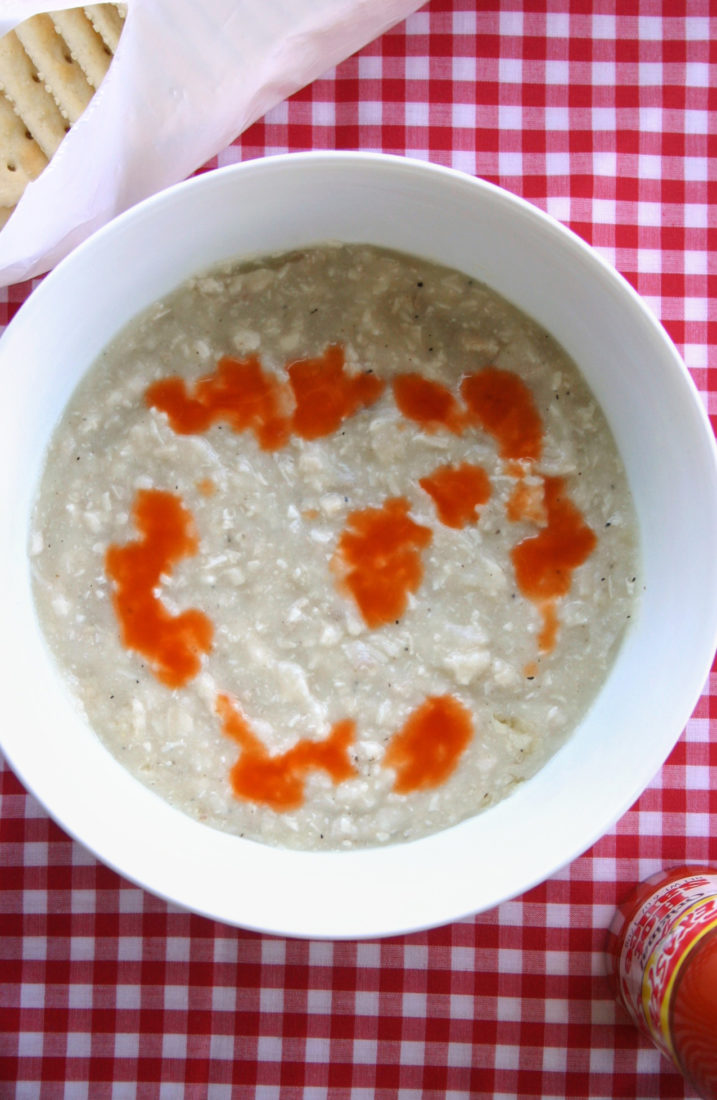
Although regional variations on chicken mull contain everything from milk and cream to butter, corn, and eggs, this prize-winning recipe calls for only two ingredients, not counting water and seasoning: a whole chicken and a box of store-brand soda crackers. Serve it with hot sauce, cole slaw, and extra crackers on the side.

Traditionally, Appalachian cooks prepare kil’t greens in the springtime, from tender garden lettuces and the nascent leaves of wild plants. When those delicate greens meet a boiling-hot dressing of bacon, onion, and vinegar, they soften and wither immediately. In other words, they’re kil’t.
Photo: Peter Frank Edwards
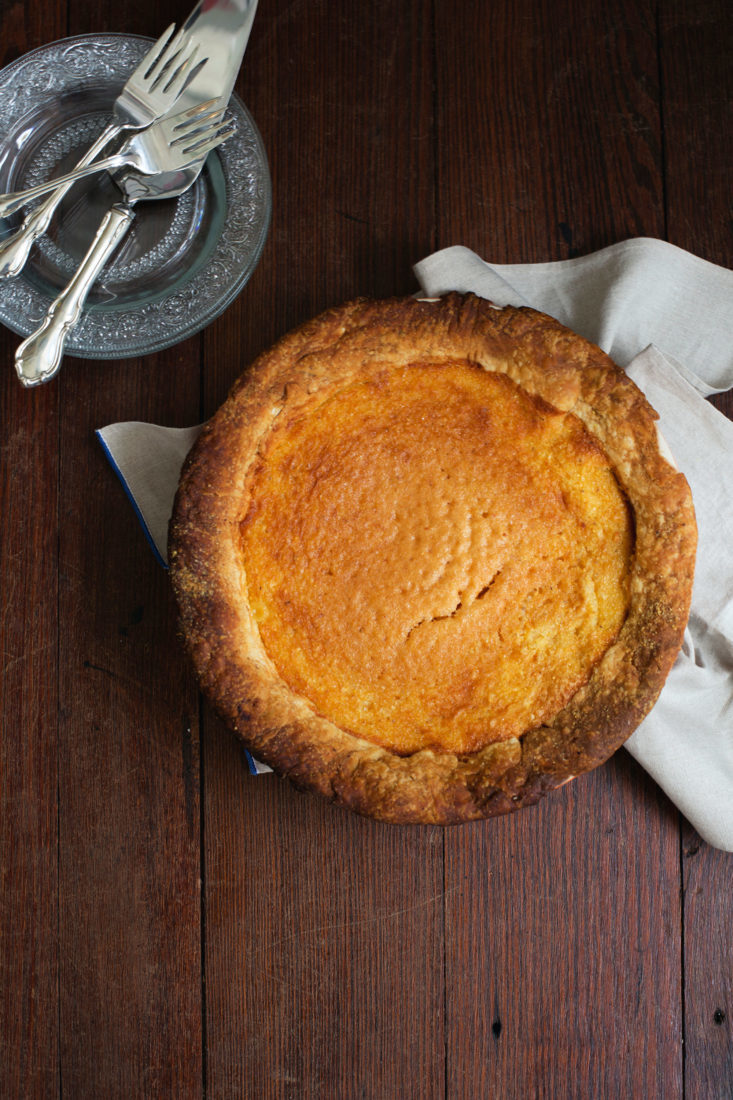
You can make vinegar from just about any sugary liquid. Sweet tea, fruit juice, even soda—with time and a little bit of effort, they’ll all transform. Here, bake homemade Cheerwine vinegar into a pie that harks back to the days when Appalachian cooks, lacking citrus, substituted a more common ingredient with a similar bite.
Photo: Margaret Houston

Spiced Quail with Chocolate Gravy
As Southern food goes, chocolate gravy is about as regional as it gets. A sweet slurry of cocoa powder, sugar, and flour stirred into milk, it’s a staple on the stove in countless kitchens in the Ozarks.
Photo: Johnny Autry

Photo: Peter Frank Edwards

The tradition of scrambling pork brains with eggs probably began on dark winter mornings before the dawn of industrial agriculture, when many rural families slaughtered their hogs and went to work on the sausage, hams, and souse meat that would feed them for months. The most perishable organs hit the table first: brains for breakfast and lungs, often called “lights,” for lunch.
Photo: Margaret Houston

In many Southern households, tomato aspic has gone the way of tuna casserole and ambrosia—curiosities at the back of the recipe box. It deserves better. This version from chef Elliott Moss is a cool, refreshing party dish that’s sure to win over the aspic averse.
Photo: Johnny Autry

In the years before refrigeration, New Orleans locals had to find other ways to keep the pantry stocked. One of the city’s best-known snacks of old owes its existence to just those circumstances. Daube is a nourishing beef and vegetable stew with French roots, and when Creole cooks simmered the leftovers into a sliceable, shelf-stable concentrate, they inadvertently created daube glacé—a meaty aspic most often consumed on crackers and mayonnaise-slicked po’boys.

Those brave enough to sample this North Carolina treat will realize that it’s actually a lot tastier than its unappetizing moniker implies. And the regional staple is dead simple if you’ve got a meat grinder at your disposal.
Photo: Lucy Cuneo

The first thing to understand is that neither the chili bun nor the slaw dog, a.k.a. West Virginia Hot Dog, are quite the same thing as what the rest of the world calls a chili dog. A chili bun is just that: Chili. On a bun. It has no dog. A slaw dog does, along with the chili, but it also has…that’s right, slaw.
Photo: Johnny Autry








